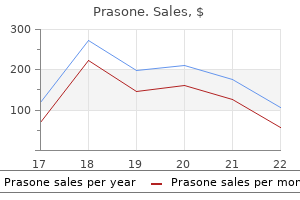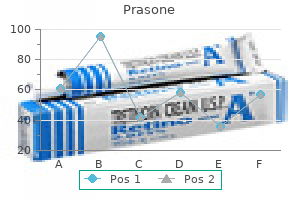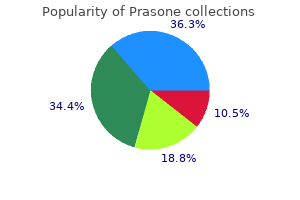", allergy symptoms anus".
Q. Kaffu, M.B.A., M.D.
Associate Professor, Howard University College of Medicine
However allergy symptoms vs cold symptoms , a causal relationship between these disorders and toluene abuse remains to be established allergy symptoms ear pressure . Isolated case reports of antiglomerular basement membrane-mediated glomerulonephritis and hemolytic-uremic syndrome have also been reported in solvent abusers (Locatelli and Pozzi allergy forecast in round rock tx , 1983; Nathan and Toseland, 1979); however, a causal relationship is yet to be established. Heroin-associated focal and segmental glomerulosclerosis and secondary amyloidosis have been supplanted by human immunodeficiency virusassociated focal and segmental glomerulosclerosis and hepatitis C-related membranoproliferative glomerulonephritis. Concurrently, there has been an increase in the incidence and spectrum of nephrotoxicity associated with the use of cocaine and designer recreational drugs. Trade-off between the benefits of lithium treatment and the risk of chronic kidney disease. Toxicological and histopathological analysis of a patient who died nine days after a single intravenous dose of methamphetamine: A case report. Lithium induced toxicity in rats: Blood serum chemistry, antioxidative enzymes in red blood cells and histopathological studies. The impact of modern treatment principles may have eliminated lithium-induced renal failure. Severe hyponatremia and inappropriate antidiuretic hormone secretion following ecstasy use. Cocaine-induced acute interstitial nephritis: A case report and review of the literature. Long-term, low-dose lithium treatment does not impair renal function in the elderly: A 2-year randomized, placebo-controlled trial followed by singleblind extension. On the mechanism of lithium-induced renal tubular acidosis: Studies in the turtle bladder. Liver and kidney toxicity in chronic use of opioids: An experimental long term treatment model. Hyperosmolar nonketotic coma precipitated by lithium-induced nephrogenic diabetes insipidus. Mechanisms of renal lithium handling and their relationship to mineralocorticoids: A dissociation between sodium and lithium ions. Journal of Investigative Medicine High Impact Case Reports, 2(3), 2324709614551557. Comparison of intermittent haemodialysis, prolonged intermittent renal replacement therapy and continuous renal replacement haemofiltration for lithium toxicity: A case report. Rhabdomyolysis and acute renal failure associated with phencyclidine intoxication. Amelioration of polyuria by amiloride in patients receiving long-term lithium therapy. Amiloride restores renal medullary osmolytes in lithium-induced nephrogenic diabetes insipidus. Kidney damage in long-term lithium patients: A cross-sectional study of patients with 15 years or more on lithium. Renal function on and off lithium in patients treated with lithium for 15 years or more. Hyperparathyroidism and long-term lithium therapydA cross-sectional study and the effect of lithium withdrawal. A historical cohort study of kidney damage in long-term lithium patients: Continued surveillance needed. The effects of lithium on the permeability of an epithelial membrane, the toad urinary bladder. Identification of signaling pathways regulating primary cilium length and flow-mediated adaptation. Expression of transporters involved in urine concentration recovers differently after cessation of lithium treatment. Duration of lithium treatment is a risk factor for reduced glomerular function: A cross-sectional study. Anti-glomerular basement membrane antibody-mediated glomerulonephritis due to glue sniffing. Hyperthermia and multiorgan failure after abuse of "bath salts" containing 3,4-methylenedioxypyrovalerone. Myelofibrosis and focal segmental glomerulosclerosis associated with toluene poisoning.

Cocaine and the kidney: A synthesis of pathophysiologic and clinical perspectives fall allergy symptoms 2013 . Lithium-induced renal toxicity in rats: Protection by a novel antioxidant caffeic acid phenethyl ester allergy forecast germany . Plasma levels of antidiuretic hormone in patients receiving prolonged lithium therapy allergy medicine for pregnancy . Effect of cocaine on leakage of creatine kinase from isolated fast and slow muscles of rat. Cocaine increases Sendai virus replication in cultured epithelial cells: Critical role of the intracellular redox status. Coordinate and independent effects of cocaine, alcohol, and morphine on accumulation of IgG aggregates in the rat glomeruli. A review of thirty cases of rhabdomyolysis-associated acute renal failure among phencyclidine users. Vasculopathy related to cocaine adulterated with levamisole: A review of the literature. Antiglomerular basement membrane antibody-mediated glomerulonephritis after intranasal cocaine use. Urinary excretion of albumin beta2-microglobulin and free light chains during lithium treatment. Effect of an acute oral lithium intake on urinary Aquaporin-2 in healthy humans with and without simultaneous stimulation with hypertonic saline infusion. Lithium effects on calcium, magnesium and phosphate in man: Effects on balance, bone mineral content, faecal and urinary excretion. Functional and structural rat kidney changes caused by peroral or parenteral lithium treatment. Transient central diabetes insipidus in the setting of underlying chronic nephrogenic diabetes insipidus associated with lithium use. Kidney functioning during lithium treatment: A prospective study of patients treated with lithium for up to ten years. Physiologic effects and community control measures for intoxication from the intentional inhalation of organic solvents. Persistent nephrogenic diabetes insipidus associated with long-term lithium carbonate treatment. Lithium-induced alterations in parathyroid cell function: Insight into the pathogenesis of lithium-associated hyperparathyroidism. Associated focal and segmental glomerulosclerosis in the acquired immunodeficiency syndrome. Lithium-induced nephrogenic diabetes insipidus: Studies of tubular function and pathogenesis. Chronic renal failure in lithium-using geriatric patients: Effects of lithium continuation versus discontinuationdA 60-month retrospective study. The effect of serum lithium levels on renal function in geriatric outpatients: A retrospective longitudinal study. Renal function in geriatric psychiatry patients compared to non-psychiatric older adults: Effects of lithium use and other factors. Prevalence and correlates of renal disease in older lithium users: A population-based study. Minimal-change disease and the nephrotic syndrome associated with lithium therapy. Membranous glomerulonephritis and cellular crescents induced by levamisole-adulterated cocaine abuse: A case report. Lower estimated glomerular filtration rates in patients on long term lithium: A comparative study and a meta-analysis of literature. Solid renal tumours of collecting duct origin in patients on chronic lithium therapy. Cholestatic jaundice, acute kidney injury and acute pancreatitis secondary to the recreational use of methandrostenolone: A case report. Medical complications of cocaine: Changes in pattern of use and spectrum of complications. Screening for the markers of kidney damage in men and women on long-term lithium treatment.
. Healing 02 02 14 Saramma Cough & skin allergy got healed.

Overall incidence was greater in females than males allergy testing seattle , and increased with increasing age allergy symptoms weather . The incidence of airflow limitation per 1000 person-years in current smokers was 18 allergy testing portland maine . Lung function in adulthood is also reduced after early life exposure to organic pollutants. In a comprehensive study, levels of organic pollutants were assessed in serum from Danish women in the 30th week of pregnancy. As many as 300 million people worldwide suffer from asthma, and estimates suggest that this number may increase to 400 million by 2025 (Masoli et al. Not surprisingly, the strongest effects on asthma were from maternal prenatal smoking, and the strongest effects on wheeze were from maternal postnatal smoking. In many cases prenatal tobacco smoke exposure is accompanied by postnatal tobacco smoke exposure. In this scenario, postnatal tobacco smoke exposure may represent a secondary insult, or second hit, to the lung. The combination of in utero tobacco smoke exposure and second-hand smoke exposure later in childhood was examined in Latino and black children with poor asthma control. Separation of the effects of prenatal from postnatal tobacco smoke exposure remains difficult as many mothers who smoke during pregnancy continue smoking after the birth of the child. The strongest human data to emerge examining the effects of prenatal only tobacco smoke exposure on the development of asthma come from a study of eight European birth cohorts of mothers who smoked during pregnancy but not during the first postnatal year (Neuman et al. Perinatal environmental exposures, other than tobacco smoke can also alter the development of asthma, and lung responsiveness. For example, air pollution, pre- and postnatal, is well established to associate with the development of asthma and with poor asthma control (Ghosh et al. While the mechanistic connections between toxin exposures and preterm birth are still being elucidated for many exposure types, epidemiological evidence supports a link. For some toxic exposures including lead and tobacco smoke, substantial evidence supports the link between prenatal exposure and preterm birth. For other exposures, such as air pollution, particularly for sulfur dioxide and particulates, agricultural chemicals, nitrates and arsenic in drinking water, evidence of exposure contributing to preterm birth is growing (Institute of Medicine Committee on Understanding Premature Birth and Assuring Healthy Outcomes, 2007). Infants born preterm often have respiratory failure and require postnatal management with mechanical ventilation and oxygenrich gas. Maternal tobacco smoke exposure is associated with longterm declines in lung function and contributes to the development of airway hyper-responsiveness (Singh et al. Heavy metal exposures and poor air quality also influence childhood lung function (Zeng et al. Delineating the lifetime course of events, and mechanisms connecting perinatal events with the programming of lung disease requires investigation in animal models. Firstly, because the effects of developmental programming often occur later in life, animal models with relatively short life spans allow both the initiation of an exposure in the perinatal period, and the onset of disease to be studied in the same context. Secondly, mechanisms of developmental programming have their origins in cell-specific deviations from normal. Therefore the ability to access the lung before, during, and after the onset of disease is important. Finally, the use of animal models to study developmental programming allows testing of cause-and-effect relationships between toxin exposure and disease. The interventions may have clinical relevance, or may be used solely to demonstrate causality of an exposure for a disease.

Nuclear alterations can be assessed using electron microscopy allergy medicine loratadine , but can also be assessed using fluorescence microscopy and nuclear staining dyes such as 40 allergy testing vancouver wa ,6-diamidino-2-phenylindole or Hoechst 33342 allergy vinegar symptoms . These are best assessed using electron microscopy, but can also be assessed using enzymatic assays. Further, as mentioned earlier, it is critical to demonstrate that inhibition of autophagy actually reverses cell death prior to identifying it as critical to genesis of nephrotoxicity. Biochemical markers distinguishing necrosis, apoptosis, and autophagy vary considerably (Table 3). Keep in mind that some of these markers could indicate necrosis under certain circumstance (see below). It should be noted that there may not be one marker that is a gold standard for any type of cell death. This is one reason why it is critical to use multiple assays when assessing mechanisms of cell death. These markers should preferably include both morphological and biochemical markers. Caspase activation can be measured using fluorometric substrates somewhat selective to a given caspase, and by immunoblot analysis assessing the conversion of procaspases to activated caspases. Caspase-3 is the most commonly assessed family member, and still remains an excellent marker for apoptosis, especially when paired with other markers. It can be assessed by a variety of methods, including flow cytometry and immunohistochemistry. Mechanisms of Toxicant-Induced Acute Kidney Injury 69 Biochemical markers used to assess necrosis typically center around alterations in the plasma membrane and release of intracellular enzymes. Loss of organelle membrane integrity, especially mitochondrial membrane integrity, is an indicator of necrosis. However, it can also indicate that apoptosis or autophagy has progressed to late apoptosis. This is sometimes called secondary necrosis, and is an excellent example of why time-dependent studies are critical to the assessment of cell death. When assessing mechanisms of toxicant-induced cell death, it is important to remember that the mechanism is dependent on the dose of the toxicant used and the time of exposure. For example, doses of cisplatin lower than 50 mM typically induce apoptosis in renal cells, whereas higher doses induce necrosis (Lieberthal et al. It is also important to note that the mechanisms of toxicant-induced kidney injury can be model-dependent. Differences in media, the presence or absence of serum, glucose, and solvents, can all account for these discrepancies. The following sections describe specific mechanisms by which toxicants induce cell death by interacting with cellular and biochemical mediators of nephrotoxicity. The division of targets of toxicant injury into cellular and biochemical is strictly an empirical one. This was done to allow for the initial focus on the role of specific organelles (cellular targets) in the mechanisms of nephrotoxicity, and then on biochemical events that occur at these organelles. In reality, these events can occur in tandem at the same location, or in parallel pathways in different locations. Nephrotoxicity is typically initiated by interactions with either cellular or biochemical targets within the kidney. These interactions can result in the activation of the cell death pathways described earlier. Cellular targets of nephrotoxicants that induce apoptosis are typically those that activate caspases. Not surprisingly, these same cellular targets can induce necrosis or even autophagy. This emphasizes the fact that these types of cell death pathways do not occur by mutually independent pathways. A more accurate model suggests that necrosis, apoptosis, and autophagy proceed by parallel pathways, with common cellular and biochemical targets. The specific mediators affected, and the severity of injury will determine which pathway dominates. A classic example is amphotericin B, an antifungal polyene that binds to cholesterol in the plasma membrane, resulting in pore formation and alterations in potassium and hydrogen permeability (Steinmetz and Husted, 1982; Gil and Malnic, 1989; Carlson and Condon, 1994). Other nephrotoxicants that alter plasma membrane permeability to potassium include heavy metals such as silver, gold, mercury, and copper (Kone et al.

